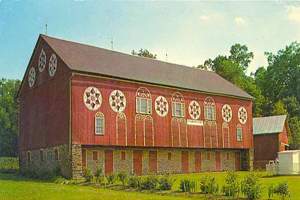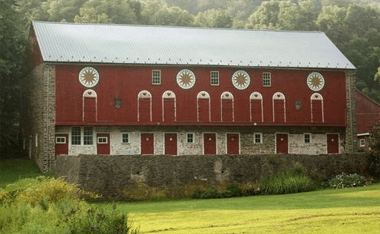 Hex signs were originally called Sech Circles because the first ones included a six-pointed star in a circle.
Later, they were also referred to as Hexerie or Jinks. They are usually painted in bright colors and have meaning. Red
stood for emotion, yellow for love of man and the sun, green for growing things, blue for protection, white for purity,
and brown for mother earth.
Hex signs were originally called Sech Circles because the first ones included a six-pointed star in a circle.
Later, they were also referred to as Hexerie or Jinks. They are usually painted in bright colors and have meaning. Red
stood for emotion, yellow for love of man and the sun, green for growing things, blue for protection, white for purity,
and brown for mother earth.
History
Hex signs were created by the Pennsylvania Dutch, who were actually Germans who fled to America in pursuit of the religious freedom being offered by William Penn. These symbols were painted on barns, carved into furniture, and hammered on to utensils. They were thought to bring luck, love, abundance, and ward off misfortune such as fire and lightning.
Two theories exist as to the origin of the name. Occult practitioners assert the term hex derives from the Pennsylvanian German word hex (German Hexe, Dutch Heks), which means witch. Supporters of the folk-art theory assert that since hex signs six-sided, brightly colored geometric designs, termed hexagrams, the name comes from the Greek root hex which means six.
It is more likely that occult practitioners are correct. A six-sided design said to offer protection against hexes. Hex signs can still be found above entranceways to Germanic homes and buildings. Hex signs was used to thwart negative rune workings and represented a positive charm.
Time Line
Hex signs began to appear to Europe in the early 15th century. In the mid 17th century, they started appearing in America.
During the 20th century hex signs were produced as souvenirs and keepsakes for the tourist industry in Pennsylvania. Hex signs were most often mounted onto barns or used as household decorations. Jacob Zook claimed to have invented the modern-day mountable sign in 1942. He based his work on traditional designs.
Today some non-Pennsylvania Dutch people use the hex signs in a talismanic nature, although most see hex signs as purely decorative.
Designs
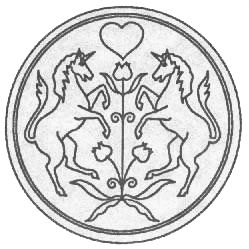
The Unicorn Hex
Strength and courage to strive for your goals. Also represents virtue, love, faith, hope, and charity.
Strength and courage to strive for your goals. Also represents virtue, love, faith, hope, and charity.
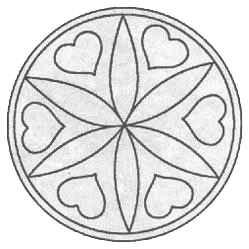
The Six-Pointed Love Hex
All kinds of love, and protection of them.
All kinds of love, and protection of them.
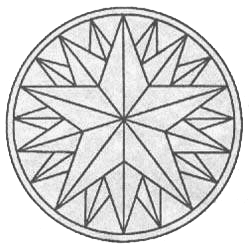
The Lucky Star Hex
Each color symbolizes luck in many things: Love, fortune, friendship, job, etc. Also a protection against fire.
Each color symbolizes luck in many things: Love, fortune, friendship, job, etc. Also a protection against fire.
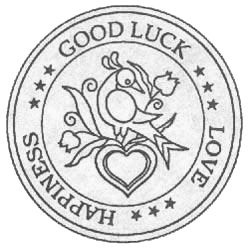
The Distlefink Hex
Good luck, love, and happiness. Often put on new houses to insure a happy household (especially if with blue background). The tulip means faith, hope, and charity.
Good luck, love, and happiness. Often put on new houses to insure a happy household (especially if with blue background). The tulip means faith, hope, and charity.
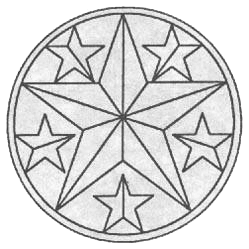
The Helath Hex
Protection of your health from all disease. The various diseases are represented by different colors in the rosette.
Protection of your health from all disease. The various diseases are represented by different colors in the rosette.
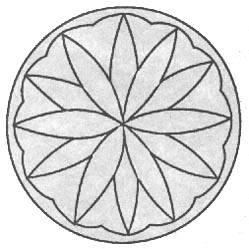
The Oak Leaf Hex
Strength of body, mind, and character. The scalloped border represents smooth sailing in life.
Strength of body, mind, and character. The scalloped border represents smooth sailing in life.
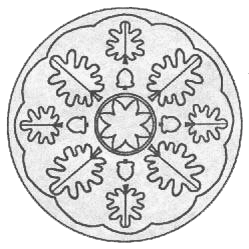
The Triple Five-Pointed Star of Luck, Love, and Happiness Hex
Also strong protection against fires.
Also strong protection against fires.



